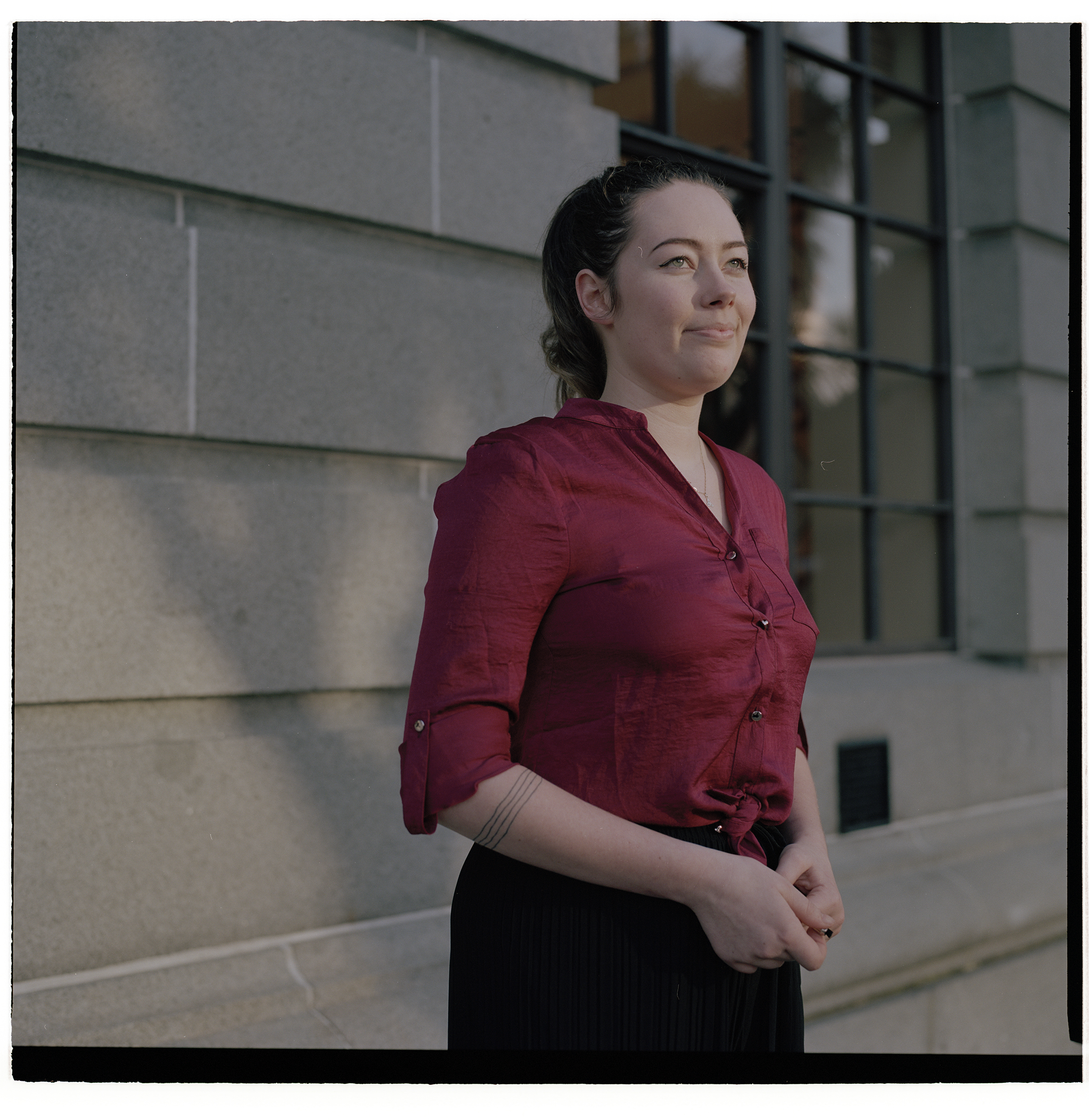This story appears in VICE Magazine's Power and Privilege Issue. Click HERE to subscribe.
At the start of 2016, the town of Kaitaia, in New Zealand’s Far North—population 5,000—had just experienced the loss of six young people to suicide in quick succession. Nina Griffiths, a local high school student, was one of the grieving. Among those who took their lives was a close friend who had been a member of a youth peer-support group with her. “We’re a small community, so that touches everyone,” Griffiths says. “Everyone knows someone.”
After the suicides, roadblocks kept popping up for Griffiths and other teens trying to address the crisis. They applied for funding for more peer-support programs and got denied. Even the meeting rooms they’d been using were closed off. Concerned that in-school discussion could prompt copycat attempts, the town’s high schools were not talking about the issue. “We felt like we’d failed,” Griffiths says. “I got so frustrated.”
Griffiths decided that teens needed to take matters into their own hands. She called a series of community-wide meetings and began campaigning for a broader community response to the deaths. “We’re always told as young people, these people, the adults, know better,” she says. “And I understand in many situations that might be true, but what I started to realize was we understood our pain better than they did.”
New Zealand's teen suicide rate is shocking—the highest in the developed world. According to UNICEF’s 2017 report, the suicide rate for teenagers between 15 and 19 is 15.6 suicides per 100,000 people—twice as high as in the United States and about four times the rate in Britain. The suicide rate is in part driven by the legacies of colonization: deprivation, community breakdown, and high rates of incarceration among the indigenous community. According to data from 2018, the suicide rate among Maori men across all age groups was around 1.7 times that of non-Maori.
In New Zealand’s Far North, where Griffiths lives, the problem is even more acute. High rates of poverty and drug abuse prompted Ricky Houghton, a well-known activist and philanthropist, to request that the government declare a state of emergency in the region last year. “You need to understand the true social and economical deprivation of this community,” Houghton told TVNZ at the time. “Up to 85 percent in some pockets are unemployed, 37 percent are single parents, and the average income is $21,000 [about $14,000 US].”
Still, Griffiths says, “Northland is the best place in the world. There is nowhere else in the world like it.” New Zealand’s least urbanized region, Northland is known as the “Winterless North” for its warm, subtropical climate.
“We’re always told as young people, these people, the adults, know better,” she says. “And I understand in many situations that might be true, but what I started to realize was we understood our pain better than they did.”
Griffiths says she first came across the issue of depression and suicidal ideation back when she was 12 or 13. The small primary school she had attended, Pamapuria School, was in the headlines after a teacher admitted to abusing multiple children in his care. One of Griffiths’s friends disclosed he’d been a victim, and told her how alienating he’d found the formal process of reporting and counseling. It made her realize that many young people found the experts and professionals working in mental health too sterile, unrelatable, and distant. “People needed someone to talk to, and we can talk differently to people our own age,” she says.
For teenagers growing up in the north, tough statistics could easily slide into feelings of hopelessness. “One of the problems we have as rangatahi [Maori youth] is the options for when we leave school are really, really limited,” Griffiths says of young people in Northland. “It kind of means the ones left behind who don’t have the opportunity to do tertiary study just get left. People get down, their friends leave.

“The opportunities are increasing,” she continued, but noted, “we need to get that feeling of empowerment to our youth—we’ve got so many capable young people who have never been told they can achieve.”
By the end of 2016, Griffiths’s public campaign had proved a success. She had won $10,000 in funding for a youth center, expanded their peer-support program, and propelled the conversation about youth suicide back onto the national stage. She won the Hits People’s Choice Award for New Zealander of the Year in 2016. Most promising of all, the suicide rate in Northland dropped 25 percent, from 28 people in 2015 to 21 in 2016. Griffiths responded that the number was still 21 too many.
The campaign also gave young people a chance to speak about the issues affecting their communities the most. “It’s about saying your voice is worth something, you have something to say—and if your voice is worth something then you are worth something too,” Griffiths says.
This year Griffiths has moved south to New Zealand’s capital city, Wellington, where she’s completing a diploma in Maoritanga (Maori studies), studying Maori cultural practices. She still hopes to move home one day. For now, she has stepped back from direct involvement in the Northland peer-support scheme, taking time to take care of herself and take a break from the heaviness of it all. But in Northland, the conversation is continuing. Griffiths says there has been a huge increase in community awareness, support groups, and discussion. She also says she won’t stop talking about suicide prevention.
“My strength is to communicate things,” she says, laughing. “I’ve got a big mouth and why shouldn’t I use it?”
Sign up for our newsletter to get the best of VICE delivered to your inbox daily.
from VICE US https://ift.tt/2PBAkZa
via cheap web hosting
No comments:
Post a Comment